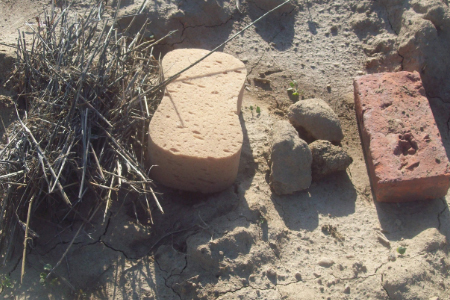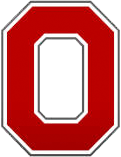
Clods and Brick: What do you call a brick on top of the soil?
We call it a clod. Clods are made by humans who till the soil. Tilled soil sets up like a brick wall. Clay particles have a negative charge and when positive ions like Ca++, Mg++, or K+ attach clay particles together, the soil forms a clod. Clods are manmade.
We call it a clod. Clods are made by humans who till the soil. Tilled soil sets up like a brick wall. Clay particles have a negative charge and when positive ions like Ca++, Mg++, or K+ attach clay particles together, the soil forms a clod. Clods are manmade.

SOM, Sponge, clods, and brick
The sponge in this picture represents the crop residue and soil organic matter (SOM) and the brick represents the clay soil particles and the clod. SOM acts like a sponge to absorb water and hold soil nutrients. The clay particles give soil structure. Soil needs both SOM and clay particles. Too much tillage oxides the SOM into the atmosphere and makes our soils hard and dense, what farmers often call poor soil structure or compaction.
The sponge in this picture represents the crop residue and soil organic matter (SOM) and the brick represents the clay soil particles and the clod. SOM acts like a sponge to absorb water and hold soil nutrients. The clay particles give soil structure. Soil needs both SOM and clay particles. Too much tillage oxides the SOM into the atmosphere and makes our soils hard and dense, what farmers often call poor soil structure or compaction.

Bison Photo: Soil Health is about mimicking Mother Nature.
Follow the Bison: Spread your manure or fertilizer thin and apply it to live plants.
Follow the Bison: Spread your manure or fertilizer thin and apply it to live plants.

